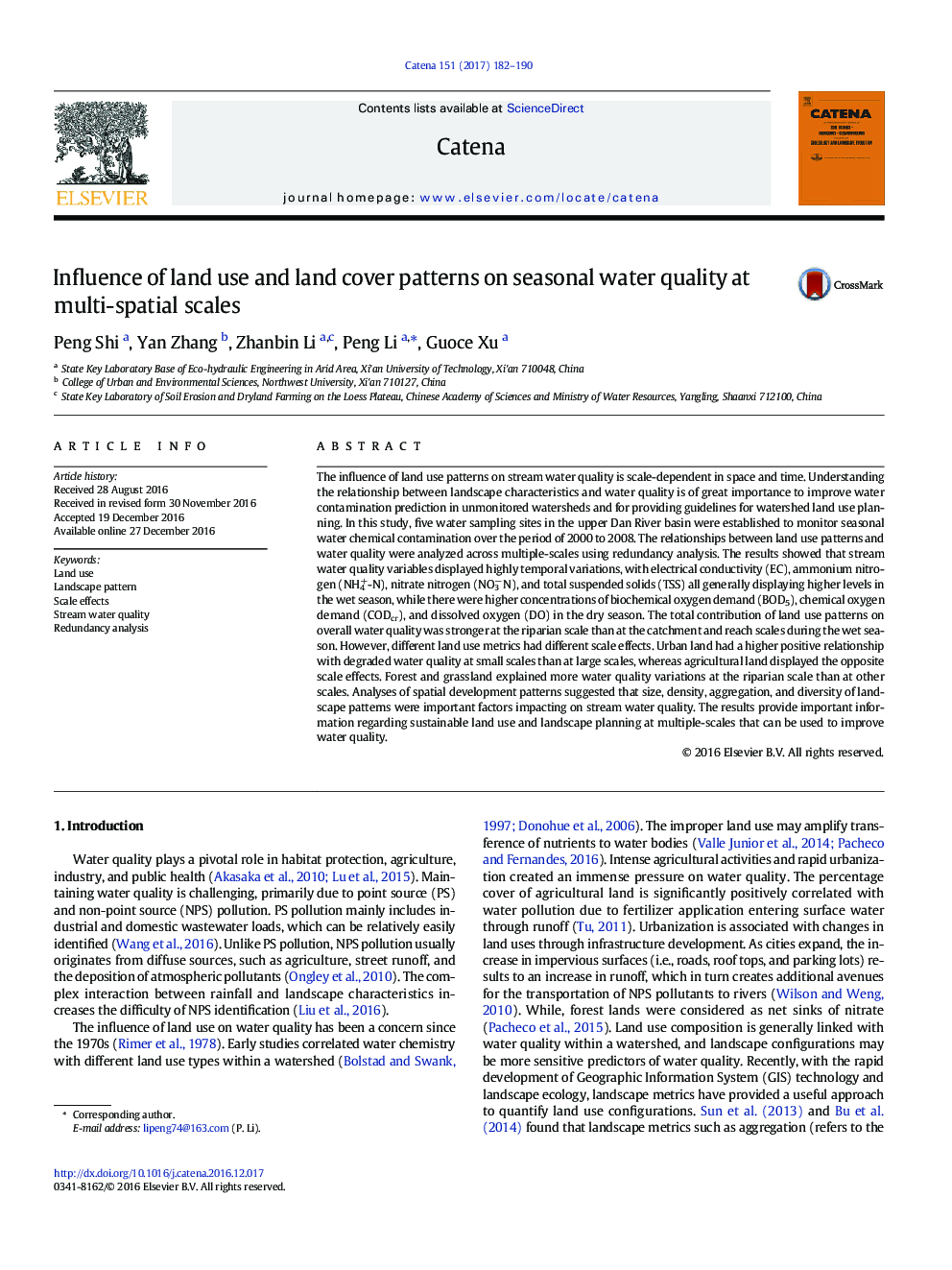| کد مقاله | کد نشریه | سال انتشار | مقاله انگلیسی | نسخه تمام متن |
|---|---|---|---|---|
| 5770184 | 1629203 | 2017 | 9 صفحه PDF | دانلود رایگان |
- Influence of land use patterns on water quality is scale-dependent.
- Water quality is generally linked to land uses at riparian scale.
- Land uses had strong relationship with water quality during wet season.
- Land use planning was suggested at multiple-scales to improve water quality.
The influence of land use patterns on stream water quality is scale-dependent in space and time. Understanding the relationship between landscape characteristics and water quality is of great importance to improve water contamination prediction in unmonitored watersheds and for providing guidelines for watershed land use planning. In this study, five water sampling sites in the upper Dan River basin were established to monitor seasonal water chemical contamination over the period of 2000 to 2008. The relationships between land use patterns and water quality were analyzed across multiple-scales using redundancy analysis. The results showed that stream water quality variables displayed highly temporal variations, with electrical conductivity (EC), ammonium nitrogen (NH4+-N), nitrate nitrogen (NO3â N), and total suspended solids (TSS) all generally displaying higher levels in the wet season, while there were higher concentrations of biochemical oxygen demand (BOD5), chemical oxygen demand (CODcr), and dissolved oxygen (DO) in the dry season. The total contribution of land use patterns on overall water quality was stronger at the riparian scale than at the catchment and reach scales during the wet season. However, different land use metrics had different scale effects. Urban land had a higher positive relationship with degraded water quality at small scales than at large scales, whereas agricultural land displayed the opposite scale effects. Forest and grassland explained more water quality variations at the riparian scale than at other scales. Analyses of spatial development patterns suggested that size, density, aggregation, and diversity of landscape patterns were important factors impacting on stream water quality. The results provide important information regarding sustainable land use and landscape planning at multiple-scales that can be used to improve water quality.
Journal: CATENA - Volume 151, April 2017, Pages 182-190
